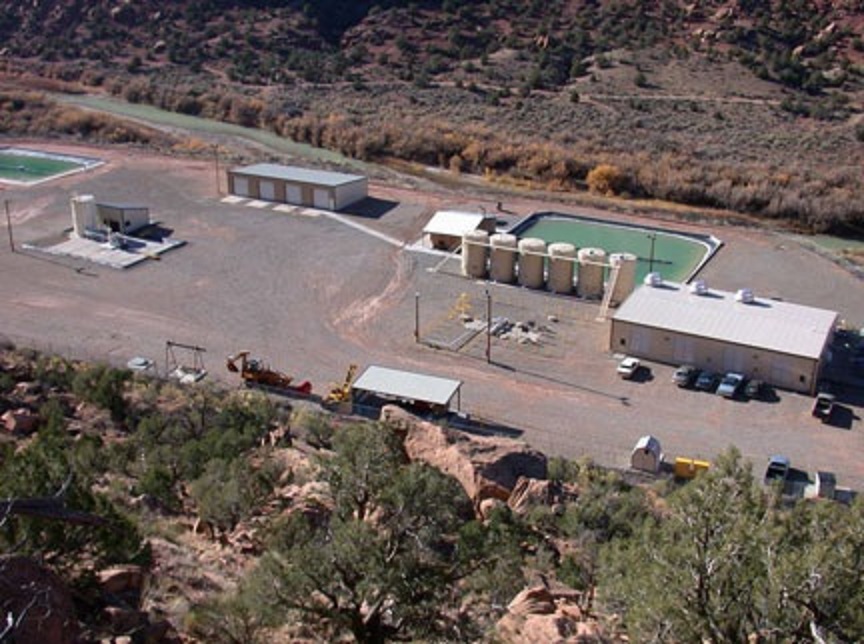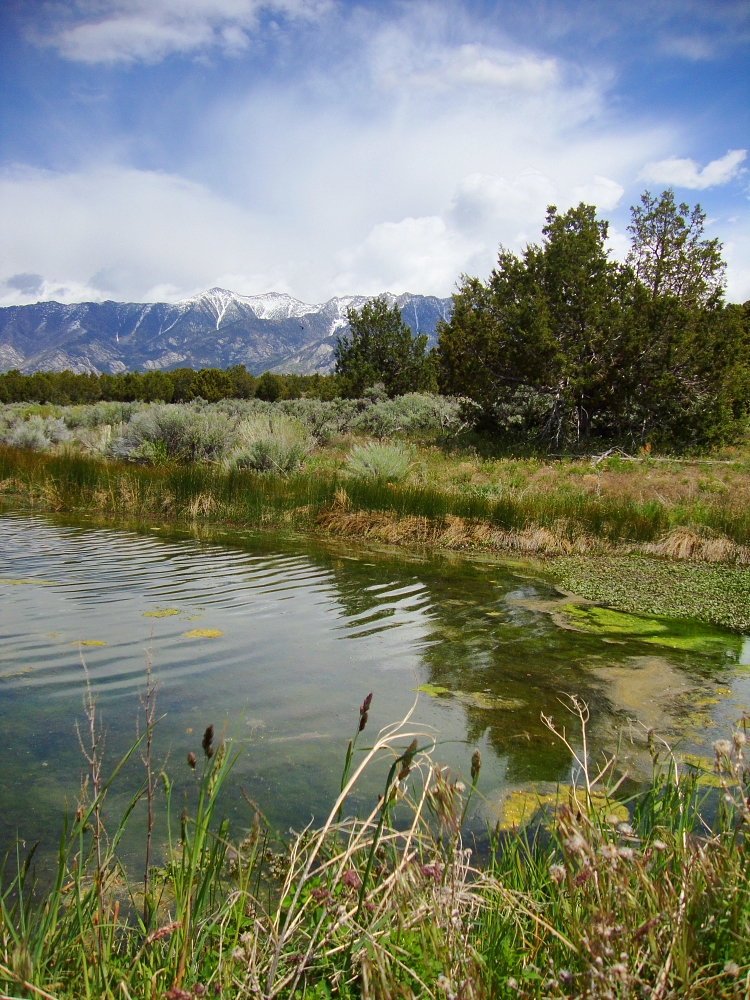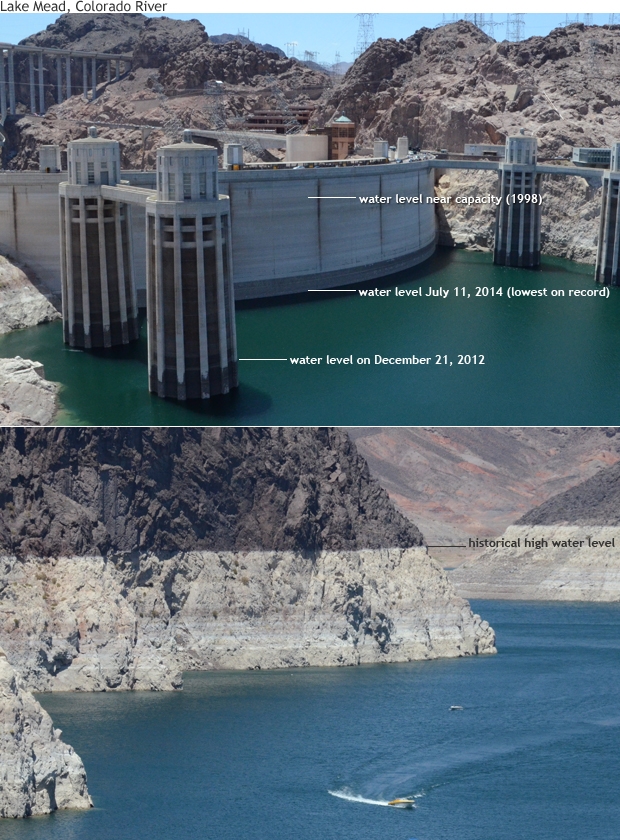Forest Service Pushes to Mine Next to West Elk Wilderness, Giving Arch Coal Access to More Than 17 Million Tons of Coal
by Center for Biological Diversity
DENVER— Just days after announcing the U.S. will exit the Paris climate agreement, the Trump administration today pushed ahead with plans for another damaging action: a plan to approve Arch Coal’s proposal to lease 1,700 acres of roadless wildlands in the Gunnison National Forest for mining 17 million tons of coal. The plan, addressed in a draft environmental impact study, would greenlight exploratory drilling and road construction to expand the West Elk coal mine about 40 miles southwest of Aspen.

Mount Gunnison perched atop the Sunset Roadless Area. The aspen forests on the right would have been scarred by six miles of road and nearly 50 methane drainage well pads if the lease expansion had gone forward. Ted Zukoski / Earthjustice
Local, regional, and national conservation groups condemned the proposal.
“This coal mine expansion proposal brings Trump’s dirty energy agenda to Colorado,” said Matt Reed, public lands director for Gunnison County-based High Country Conservation Advocates. “Pristine forests, abundant wildlife, clean water, and a healthy snowpack are the cornerstones of our local economy and quality of life, and this destructive proposal threatens all of these values.”
The Colorado mine expansion plan follows high-profile Trump actions to allow coal mines and coal-fired power plants to foul America’s air and water, including killing rules meant to stop mines from dumping millions of tons of metal-laced waste rock into streams, rolling back measures limiting arsenic, lead and mercury pollution poured into rivers and lakes by coal-fired power plants, gutting protections that limit health-threatening air pollutants from such plants, and, last week, terminating America’s commitment to reduce planet-heating climate pollution pursuant to the Paris Agreement signed by more than 190 nations.
Under Arch Coal’s plan, more than six miles of roads will be bulldozed and as many as 48 drilling pads with vents to release methane will be built in the Sunset Roadless Area, which is adjacent to the West Elk Wilderness. The area is a rolling landscape of aspen and spruce-fir forests that provide habitat for black bear, elk, lynx and cutthroat trout.
Mining in this pristine area will create a spiderweb of roads and industrial facilities on 1,700 acres of public lands, similar to that already encroaching toward wilderness.
“Bulldozing aspen groves to mine coal is exactly the sort of senseless destruction we’ve come to expect from the Trump administration,” said Allison Melton, an attorney with the Center for Biological Diversity. “But it’s madness for the climate and a raw deal for the people of Colorado, and we’re not going to sit still and let it happen.”
The Trump administration’s latest action exploits Colorado’s Roadless Rule loophole, reinstated last year after being thrown out by a lawsuit, which opened the door for road construction within about 20,000 acres of the Gunnison National Forest to subsidize coal mining.
The lease that the Forest Service is poised to approve will give Arch Coal access to more than 17 million tons of coal, extending the life of the West Elk mine by about three or four years. The company already has an estimated 10-year supply of coal under lease.
The West Elk mine was the single largest industrial source of methane pollution in Colorado from 2013 to 2015, according to U.S. Environmental Protection Agency data. Methane — an immensely potent greenhouse gas — has more than 80 times the heat-trapping power of carbon dioxide over the short term and is a major contributor to climate pollution. The West Elk mine emits so much methane that it wipes out a significant chunk of the benefit from the state’s trailblazing rule to limit waste methane from oil and gas wells.
The impact of pushing more coal into the energy market at a time when the demand for coal has dropped could undercut efforts to transition to a clean energy economy. A 2016 Forest Service study concluded that opening Colorado roadless forests to coal mining would displace renewable energy from the grid.
“While Arch Coal and the U.S. Forest Service may feel the political winds have shifted in their favor recently with the Trump administration, the harsh reality of this polluting coal mining expansion proposal remains the same,” said Jim Alexee, director of the Colorado Sierra Club. “These coal mining operations and the associated road construction will cause irreparable harm to our local air quality, to our climate, and to the wildlife living in the Sunset Roadless Area.”
“Giving away our western public lands to the coal industry isn’t energy independence, it’s a scheme to make executives and shareholders rich at our expense,” said Shannon Hughes, climate guardian for WildEarth Guardians. “Our future is clean energy and vibrant public lands, not more fossil fuel giveaways in our backcountry.”
“Roadless areas are important for many of the wildlife species in our state including the federally threatened Canada lynx,” said Matt Sandler, staff attorney for Rocky Mountain Wild. “Sacrificing these areas to appease the interests of the coal industry is irresponsible public lands management.”
“At this point in history when climate change is already causing devastating impacts in Colorado and worldwide, it is unconscionable to continue mining and burning fossil fuels, especially on federal and public lands,” said Micah Parkin with 350 Colorado. “We must begin leaving fossil fuels in the ground and transitioning rapidly to Colorado’s abundant renewable energy if we are to have any chance of staying below the 1.5-2 degrees C global temperature rise that countries around the world have agreed to.”
“It’s shameless that our roadless public lands and prime wildlife habitat will now be leased to a coal company for its own profit,” said Shelley Silbert, executive director of Great Old Broads for Wilderness. “We need to transition to a future with clean energy jobs, clean air, and healthy communities, and not commit our public lands for more development that pollutes our water, air, and climate.”
The groups pledged to oppose the plan through public comments, which the Forest Service will accept through July 24. The public can submit concerns about the proposal through the agency’s website: https://cara.ecosystem-management.org/Public//CommentInput?Project=32459.
“This proposal is the latest example of the Trump administration’s apparent desire to ignore science, poison the air we breathe, and undermine our shared responsibility to be good stewards of the Earth,” said Ted Zukoski, an attorney with the nonprofit law firm Earthjustice. “We’ll keep fighting Trump’s damaging mining plan because we need to protect what Coloradans love best about our state: clean air, scenic mountains, healthy streams, and vibrant wildlife populations.”
Read more the roadless area and what’s at stake.
See photos of the roadless areas the Forest Service opened to bulldozing, as well as of damage from Arch Coal’s ongoing mining operations to nearby forests.









![A grove of affected aspens in the La Sal Mountains. Stands along the roads to Geyser Pass and Oohwah Lake, and along the east side of the range on the flanks of South Mountain, have been particularly hard hit by leaf blight. [Photo courtesy of Brian Murdock / U.S. Forest Service]](https://i0.wp.com/deepgreenresistancesouthwest.org/wp-content/uploads/sites/10/2015/09/Aspens02-300x167.jpg?resize=300%2C167)

